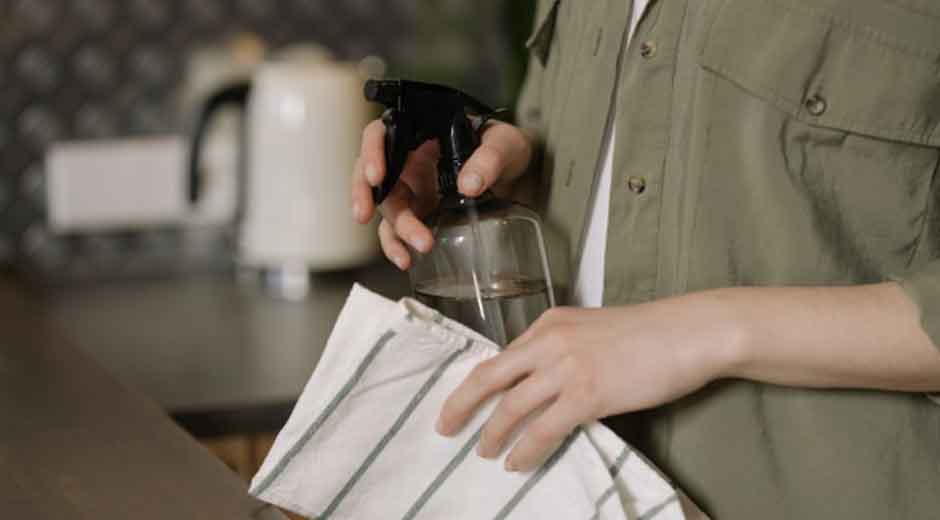The Shift Toward Safer Household Products in Health-Conscious Homes

Families today are more aware of what’s in their homes. From cleaning sprays to dish soaps and air fresheners, there’s growing concern about the health impact of everyday products. Many have begun to question how these items affect air quality, skin health, and long-term wellness.
This shift isn’t just about preferences—it’s about protection. People want to limit exposure to chemicals they can’t even pronounce. Some of these ingredients have been linked to respiratory problems, skin irritation, and hormonal disruption. It’s no surprise that more consumers are taking action.
The trend toward safer products is showing up everywhere. Natural food stores now carry household brands that didn’t exist a decade ago. Supermarkets are adding “green” sections. Subscription services offer curated boxes of toxin-free goods. This movement is gaining traction, and it’s driven by people who want clean homes without harsh chemicals.
Why the Change?
The shift toward safer household products didn’t happen overnight. It started with rising awareness about what goes into the cleaners, soaps, and laundry detergents that families use every day. For years, many of these products contained ingredients that posed health risks. But those risks were not always easy to recognize.
Common cleaning products may contain ammonia, chlorine bleach, and synthetic fragrances. Long-term exposure can lead to asthma, allergic reactions, and even more serious health issues. Studies, documentaries, and social media have all helped raise awareness. As a result, more people have started reading labels and researching alternatives.
Brands have responded to this interest. One such example is Melaleuca: The Wellness Company, which has built a reputation around offering safer, plant-based alternatives for homes across the country. The company focuses on wellness-driven products without harsh chemicals, promoting a cleaner lifestyle from the inside out.
This approach reflects a larger movement—one that is often shaped by bold leadership. Frank VanderSloot, Executive Chairman of Melaleuca, has played a key role in shaping how many families view home wellness. His leadership emphasizes both consumer health and smart product development. VanderSloot’s work has helped shift attention toward chemical-free living and practical, science-backed solutions. His commitment to transparency and wellness-focused innovation continues to influence how many households choose what they bring into their homes.
What Makes a Product ‘Safer’?
Not every product labeled “natural” or “green” is truly safe. That’s where confusion often starts. For a product to be considered safer, it should avoid harsh synthetics, use biodegradable ingredients, and be free from known irritants like phthalates or formaldehyde.
Transparency is key. Brands that clearly list ingredients and back up their claims with third-party certifications gain more trust. Certifications like EPA Safer Choice or EWG Verified help shoppers make informed decisions.
Still, greenwashing is a problem. Some companies use buzzwords but still include harmful ingredients in small print. Consumers are learning to read past the label and look into the brands themselves. This step can make a big difference in how safe a product really is.
The Role of Consumer Demand
Health-conscious shoppers are changing the market. As more people start choosing wellness-focused brands, companies are listening. Buyers want products that feel safe for kids, pets, and the environment. That shift has pushed many businesses to rethink how they make and market their goods.
Social media plays a big role in this change. Families share their favorite non-toxic products, home routines, and tips for avoiding harmful ingredients. Reviews and word-of-mouth carry real weight now. When one trusted voice recommends a safer product, others follow.
This rise in demand has pushed big-box retailers to add more “clean” items to their shelves. It’s also created room for smaller brands to grow. Online stores and subscription boxes now offer curated packages filled with eco-friendly cleaners, soaps, and detergents. These services make it easier for families to find safer options without long shopping trips or confusing research.
Benefits Beyond Health
Switching to safer household products goes beyond personal well-being. Many of these changes also help protect the planet. Products made with biodegradable formulas break down more easily and don’t leave behind harmful waste. This reduces the impact on local water systems and soil.
Some brands focus on sustainability by using recyclable packaging or refillable containers. This helps cut down on plastic waste, a growing concern for many shoppers. When people choose these products, they’re not just creating safer homes—they’re also supporting long-term environmental goals.
Another benefit is the improvement in air quality inside the home. Traditional cleaners often release fumes that linger in the air. Safer products reduce that buildup, which can be a big help for anyone with allergies, asthma, or chemical sensitivities.
Challenges to Adopting Safer Products
Making the switch can still feel overwhelming. One common challenge is price. Safer products sometimes cost more upfront. That can turn away shoppers who are used to budget-friendly options. However, many families find that these products last longer or work more effectively, which helps balance the cost.
Another challenge is trust. Some people don’t believe that plant-based or non-toxic products can clean as well as traditional ones. While that was true in the past, new formulations have closed that gap. Now, many safer products match or beat their conventional competitors.
Information overload is another issue. With so many labels and health claims, shoppers may feel confused. This is where brand transparency matters. Clear ingredients, simple messaging, and verified certifications can help people make smarter decisions.
The shift toward safer household products is more than a trend. It reflects a growing awareness of health, home, and the environment. As people learn about the effects of chemical exposure, their buying habits begin to change. They look for brands that align with their values and support a safer lifestyle.
This movement keeps growing. It’s being shaped by informed shoppers, innovative companies, and strong leaders who are pushing for better choices. Switching to safer products doesn’t have to happen overnight. It can start with small changes—one cleaner, one detergent, one better decision at a time. Each choice helps create a healthier space to live, work, and grow.


